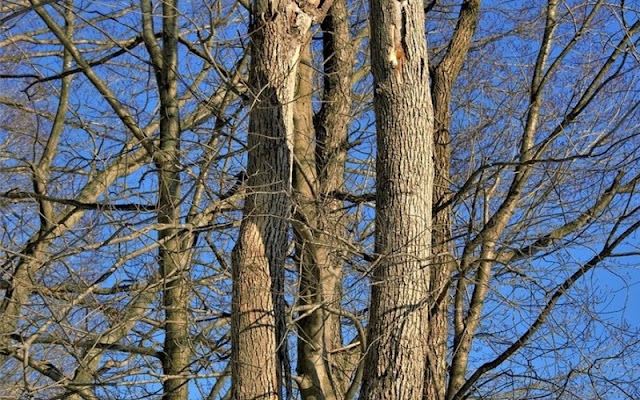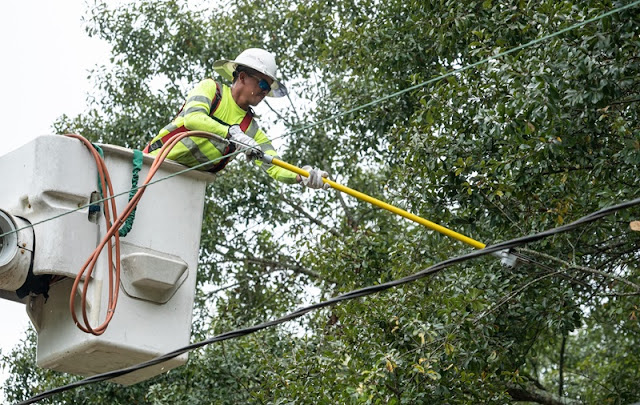Professional Tree Cutters: A Key Player in Maintaining Your Home's Curb Appeal
Are you spotting a tree with a weird trunk, oddly-coloured leaves or problematic branches? This can be a clear sign that something is going on with the tree and it requires cutting or pruning. But, before trying to DIY, it's best to consider professional tree cutters. Here's why hiring professionals are always a better idea.
How to Spot a Dangerous Tree?
Look out for dead or dry branches, as they could fall during harsh weather conditions. Keep an eye out for cracks, splits, or cavities in the trunk, as well as any unusual growth patterns. If you see any of these warning signs, it's best to call in tree-cutting services for help. Don't attempt to remove the branches yourself, as it can be risky and you may not have the proper tools. Professionals will ensure the branches are removed safely without harming the tree.
Can You Cut The Tree Yourself?
You might think you have the freedom to remove trees on your property, however, that isn't quite the case. There are laws in place to protect trees, so before you go ahead and prune or remove any trees on your land, make sure to check if you need permission from the Tree Protection Unit at the Territory and Municipal Services (TAMS). These regulations apply to trees that meet certain criteria, such as height, canopy width, and trunk circumference.
Always Hire Professionals
If you've had experience cutting or pruning trees in the past, it's best to avoid it and hire professional tree cutters to remove a tree from your property. Trying to do it yourself could result in more harm than good, like accidentally cutting healthy branches or taking down a perfectly healthy tree.
Professionals will do the job effortlessly and safely, and will also save you money. Trying to do the job yourself can easily end up in branches falling and damaging your neighbour's properties. Let's not forget that you or someone else can get hurt.
They Know Trees
Professionals are trained in identifying and treating various health issues like leaf rust, mildew, or Witches’ Broom. Instead of spending hours researching, it's best to consult with an expert to ensure your trees are in top shape. In addition to addressing health problems, tree care specialists can also help maintain the strength and longevity of your trees through proper pruning and trimming. These professionals have the skills to shape trees in a way that enhances the overall look of your property.
Pruning
Your tree-cutting professionals may tell you that the tree you thought needs to be cut, actually needs pruning. Pruning is an essential task for maintaining the health and shape of trees. It not only helps them grow in a healthy state but also ensures their structural integrity. By keeping the tree's structure intact, the risk of broken limbs and falling branches is significantly reduced. Proper pruning prevents the growth of overgrown branches, which can lead to imbalanced weight distribution and potential disasters in the future.
To maintain the overall appearance of the tree, structural pruning should be carried out during the dormant season in late fall or winter when the tree is least vulnerable to harm. It's important to remember that trees, like any living creature, are sensitive to stress, so pruning should be avoided during the wrong season. By pruning during the dormant season, the tree produces less sap, making it less susceptible to damage from insects and fungi.
Power Line Clearance
Your tree removal professionals will also suggest that you need to remove the tree if its branches interfere with power lines. This is more common than you think. Different power lines have different clearance requirements, so it's best to seek professional help to be sure. Power lines come in various types, such as transmission and distribution lines, each with its regulations to prevent blackouts. These regulations are in place to keep everyone safe. Transmission lines, for example, are high-voltage lines that carry electricity from power plants to substations.
They are usually supported by steel towers or large wooden structures with multiple lines. To maintain power line clearance, it's important to keep the area around transmission lines clear of trees and vegetation. Utility companies should have a vegetation management plan in place to comply with these regulations.
Distribution Line Clearance Regulations
Distribution lines typically operate at voltages of 100kV or lower. These electrical poles are strategically positioned along roads and residential areas, serving as conduits for electricity from sub-stations to households and commercial establishments. Despite their lower voltages, distribution lines are susceptible to potential hazards such as fallen trees or branches during storms or mishaps during tree removal. Hence, it is crucial to implement a comprehensive vegetation management plan. Any form of contact between distribution lines and tree branches can disrupt power supply not only to your residence but also to the entire neighbourhood.





Comments
Post a Comment